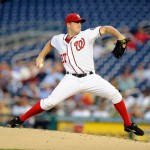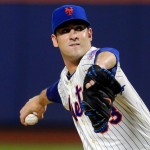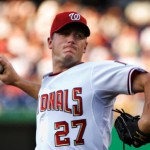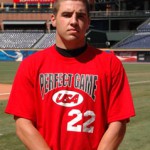On the last day of 2013, I thought I’d take a quick peek back at the posts and discussion that shaped the blog this year. Here’s a highlight reel by month of the most read and commented-upon posts in this space, as well as recaps of major events and personal favorite entries.
January 2013:
- Gonzalez linked with PED-clinic; are we worried? (Turns out Gonzalez was the sole player who was exonerated out of this scandal, which threatens Alex Rodriguez to this day).
- Are players from the 1980s under-represented in the Hall of Fame? (Yes, I think they are).
- Soriano? Well at least its Rafael and not Alfonso (Soriano ends up having a serviceable 2013 but arguably disrupts the mojo of the bullpen, which finishes ranked 17th-19th in most major statistical categories).
- How good is an “All Virginia” team? (Pretty good as it turns out, but not nearly as good as an all-Maryland team, led by Babe Ruth and Cal Ripken, Jr.).
February 2013:
- Gonzalez to play in WBC: why this is really Bad News for the Nats (Gonzalez ended up regressing in 2013 but didn’t fall off a cliff/get hurt like other Nats pitchers that were WBC participants).
- Why is Toradol “ok” but Steroids and HGH “bad?” (I still don’t know the answer, but this issue continues to come up again and again, especially during HoFame voting season).
- Washington is a Football Town; What’s yours? (Still Football despite all of Danny Snyder‘s hard work to kill the golden goose).
March 2013:
- Pitcher Wins on the Free Agency Market; an analysis (a recurring $/win analysis post that I’ll revisit in 2014 once all the major FA pitchers are signed).
- Why does MLB want to damage its sport with an International Draft?? (because owners are cheap and they’d rather save a couple million on amateurs instead of blowing it on mediocre veteran 5th starters).
April 2013:
- Are we too worried about pitch counts? (yes we are; Davey Johnson mis-managed the pitching staff in this regard many times over the course of 2013).
- Does Andrus’ new contract really affect Desmond? (yes I think it does; if Andrus is worth 8 figures so is Desmond … a factor this team needs to start planning for).
- Braves sweep shows some areas of concern (the three concerns were mis-management of the pitching staff, Zimmerman‘s throwing arm and the offense; these concerns did not get corrected all year).
May 2013:
- Davey Johnson: Over Manager (another complaint about Johnson’s decision making).
- Minor League Pitching Age Appropriateness for 2013 (the main take away was that our Hagerstown rotation was very old for its level).
- Injuries and Idiocy lead to interesting Call-ups (a theme all year, with the team surprising us with Jordan, Krol, Karns and other callups).
- Maya DFA and outright; the end of an era: (Maya was DFA’d in May, released in November).
- Nathan Karns: First look: (Karns surprise call-up and review of his debut).
June 2013
- First Look; Nats top 10 rounds of 2013 Draftees (I also tracked local and Virginia draft prospects all spring and had a separate post just about them).
- Virginia Region and State High School Results and Recaps (last in a running recap of local High School baseball tournament play recaps).
- College World Series Finals: UCLA Wins (the last in a series of CWS recap posts; I feel like i’m one of the only DC bloggers who pays attention to local or college baseball).
- Haren’s 6 week Demotion, er I mean D/L Trip (we forget just how bad Haren was at this point in the season; he was 99th out of 99 qualifying starters in ERA).
- Taylor Jordan: First Look: (the culmination of a pretty story-book season for Jordan).
July 2013
- Nats all-star review: 2013 and years past (Bryce Harper remains an answer to one of my favorite baseball trivia questions: what 3 players were selected to the all-star game in every season in which they appeared in the majors?).
- How much live action occurs in each sport? Ball-in-Play studies summarized (I’ve been working on this post for years, looking for data … still could use better data).
- Ryan Zimmerman; Mr. Walkoff; (his 9th career walk-off homer, not too far behind the all-time leader Jim Thome at 13).
- Is it time to fire Davey Johnson? (nope; they stuck with him and rebounded eventually … but it was too late).
August 2013
- First Look: Tanner Roark (one of the best stories of the season for this team; i’m an unapologetic fan. I did another gushing post 3 weeks later).
- Virginia Little League loses in Regional Final (as with HS and College ball, not a whole lot of coverage of Little League ball in the blogosphere either).
- Why aren’t the Nats getting Harper’s back?? (a great question, and one that I laid on the hands of the manager. Lets just say this; I don’t think Matt Williams will have the same problems in 2014).
- What will Shark fans do now? (Roger Bernadina released after nearly a decade in the organization).
- Matt Harvey; just unlucky (discussion on Harvey‘s UCL injury; its hard to understate just how dominant a season he was having statistically).
September 2013
- Season Statistical Review of all Nats 2013 draft picks (a great way to stay current on all our draft picks; I also did this for all the 2012 picks too).
- Great performances from Nats minor league teams in 2013… (4 of 6 domestic teams making the playoffs).
- 11 games over .500, 4 1/2 games back. (a late season charge left a glimmer of hope, soon extinguished).
October 2013
- 2013 Pre-season Rotation Rankings revisited (possibly a record for the number of player name tags used on this blog).
- Nationals 2013 post-mortem (a cathartic b*tch session about everything that went wrong this season).
- Roster construction of 2013 playoff teams (something I like doing every year).
- World Series Game 6 Pitching Matchup and Prediction (I ended up posting a whole slew of game-by-game predictions during the post-season this year, and this was the last such piece).
- What “proof” is there that David Ortiz used PEDs? (in my opinion, the “proof” is pretty thin, unless you’re a fan of anonymous lawyers and the reliability of their testimony).
November 2013
- Will the Cardinals get the same grief we got over not using Shelby Miller? (answer: nope).
- My 2013 End-of-Season award Predictions and a review of how we did predicting the awards (8/8 in major awards, 10/12 in all awards)
- What is the “ceiling” of various Nats pitching prospects? (Updated for 2013)
- Repost: Why didn’t Carlos Gomez get more NL MVP support?? (My belief is that Mike Trout for MVP votes are just as narrative driven as the Cabrera-for-MVP votes).
December 2013
- Fister acquisition thoughts and fallout (a significant acquisition and what it means going forward for the team and some role players)
- Blevins Acquired; who is getting DFA’d? (answer was Corey Brown as predicted)
- GCL/Rookie Pitching Staff Year in Review; 2013 (with links to the other 6 pitching staff reviews)
- 2014 Projected Pitching Staffs and Rotations; entire Nats system (the last major bit of analysis for the Nats this year).
Happy New Year! Its been fun.





